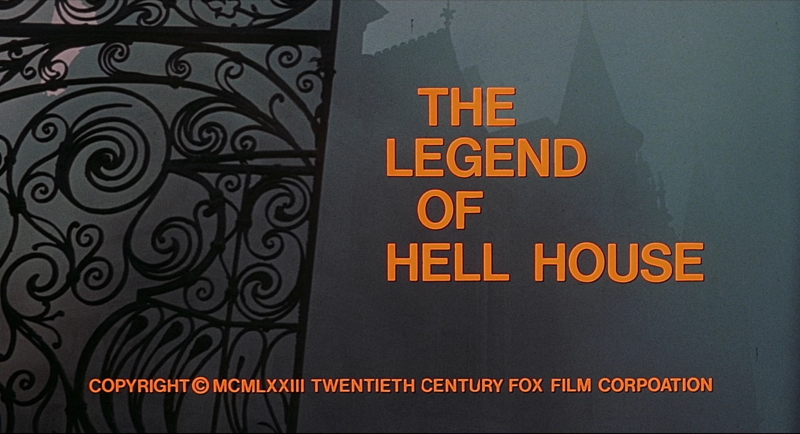The Legend of Hell House
Directed by John Hough
Written by Richard Matheson
When one thinks of classic haunted house films many will naturally name films like 1963’s The Haunting, The Others from 2001, and of course Stanley Kubrick’s horror masterpiece The Shining. But there is another film that belongs in the conversation that often goes overlooked, and that is 1973’s The Legend of Hell House.
Based on the novel Hell House written by Richard Matheson, The Legend of Hell House places four people in the heart of a dark and defiled mansion somewhere in a foggy English country side. They are tasked by a rich eccentric to prove the existence of life after death.
Just as the characters arrive at the foreboding mansion a heavy veil of dark camp seems to drop over the film. This is indicated by the character of Miss Tanner, played by Pamela Franklin, when she immediately decries what a terrible place the house is before they even walk through the door. From that moment on there isn’t a single scene that isn’t delivered without a knowing smirk.
In some ways Legend of Hell House is the anti-horror film, as it embraces the absurdity of its premise with delight, instead of masking it with a clumsy seriousness. Characters are sexually seduced by ghosts, there are evil cats, and a mechanism straight out of 50’s sci-fi to rid the house of all its evils.
This isn’t to confuse the film’s camp for its flaws, because there are many. Most notably the rather intrusive and somewhat comical use of subtitles to indicate the exact day and time. Sometimes it is necessary, many times it isn’t. There are also a few awkward oversights, such as a character suffering a violent death and moments later none of the surviving characters seem to be particularly troubled. But, the flaws rarely hinder the film.
A dizzying atmosphere aides the film as well. Deep passionate reds envelop the characters, lurching shadows stretch across walls, and suggestive sculptures and wood carvings adorn the mansion. Much of the atmosphere, like the film itself represents our passions, and the fears that we hide within them.
The most apparent fear is that of the unknown, or death. The old eccentric Mr. Deutsch is searching for a way to cheat death as he watches his decrepit body fade before his eyes. He seeks his answers in a place where he believes a man has cheated death. That man is Emeric Balasco.
The character of Dr. Barrett fears what he can’t understand, so he attempts to rationalize his experiences through science. We see him become unhinged at the end of the film when his beliefs, that he needed to be true, are proven false.
These three characters represent two sides of a coin. One side, Deutsch and Balasco, embrace the unknown, and seek immortality in its terrifying mysteries. Barrett denies the unknown, believing life and death are finite ideas that never stretch beyond the realm of our perception. All three are stubborn victims of their own unrelenting truth.
The rest of the characters are wandering in confusion. They are helpless against the whims of suggestion from both ends. They are victims of circumstance.
– James Merolla








